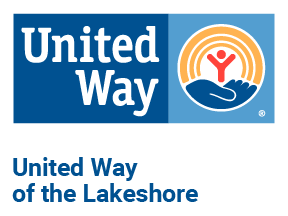
Community Data & Reports
We strive to be a resource organizer and community problem-solver, with initiatives and collaborative projects that put your contributions to work where they are needed most. Here is a listing of many data resources we use in our decision-making process.
ALICE Report:
In a collaborative effort, United Ways in several states (and more on the way) are changing the way we think about financial needs in their state and across the country.
Through a series of new, standardized measurements, each state’s ALICE Report presents a broad picture of financial insecurity at the county and municipal level. What we found was startling – the size of the workforce in each state that is struggling financially is much higher than traditional federal poverty guidelines suggest. United For ALICE is a grassroots movement stimulating a fresh, nonpartisan national dialogue about how to reverse the trend and improve conditions for this growing population of families living paycheck to paycheck.
Community Health Assessment:
A community health assessment (sometimes called a CHA), also known as community health needs assessment (sometimes called a CHNA), refers to a state, tribal, local, or territorial health assessment that identifies key health needs and issues through systematic, comprehensive data collection and analysis. Community health assessments use such principles as
- Multisector collaborations that support shared ownership of all phases of community health improvement, including assessment, planning, investment, implementation, and evaluation
- Proactive, broad, and diverse community engagement to improve results
- A definition of community that encompasses both a significant enough area to allow for population-wide interventions and measurable results, and includes a targeted focus to address disparities among subpopulations
- Maximum transparency to improve community engagement and accountability
- Use of evidence-based interventions and encouragement of innovative practices with a thorough evaluation
- Evaluation to inform a continuous improvement process
- Use of the highest quality data pooled from and shared among, diverse public and private sources
Kids Count Report
KIDS COUNT® is a project of the Annie E. Casey Foundation and a premier source of data on children and families. Each year, the Foundation produces a comprehensive report — the KIDS COUNT Data Book — that assesses child well-being in the United States. The indicators featured in the Data Book are also available in the Data Center.
TalentFirst:
TalentFirst is a catalyst working to ensure an ongoing supply of world-class talent for West Michigan. Composed of over 100 CEOs from the region, TalentFirst illuminates gaps, evaluates leading practices, and advocates for the implementation of those leading practices to make West Michigan a top 20 employment region by the year 2025.
West MI Regional Development Commission:
The West Michigan Shoreline Regional Development Commission is a federal and state designated regional planning and development agency serving 120 local governments in Lake, Mason, Muskegon, Newaygo, and Oceana Counties. WMSRDC is proud to support so many important programs in West Michigan. Part of our mission is to promote regional cooperation in the area, and the programs we support exemplify that promise.
What is the Federal Poverty Level (FPL)?
The Federal Poverty Level is a measure of income issued every year which is based on income and household size. Federal poverty levels are used to determine your eligibility for federal, state programs and benefits. The federal poverty thresholds were initially developed in 1963-1964 by Mollie Orshansky of the Social Security Administration.
What programs use the Federal Poverty Level?
FPL is generally used to determine eligibility for federal and state programs such as Medicaid, Marketplace Tax Subsidies, energy assistance, SNAP, Family and Planning Services, the Children’s Health Insurance Program (CHIP), assistance program, premium tax credits on health insurance plans, and the National School Lunch Program. The FPL requirements may vary by state.
How is the Federal Poverty Level calculated?
FPL is calculated based on family size and gross income level in the household. While the U.S. Census Bureau computes the poverty threshold, the Department of Health and Human Services (HHS) updates the HHS poverty guidelines once a year adjusting for inflation.

